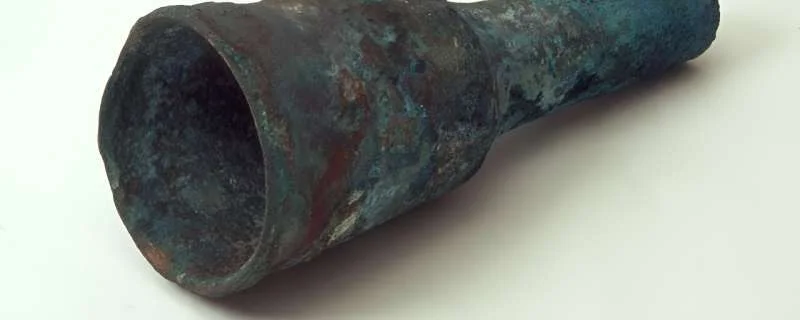An international team of researchers, led by maritime archaeologist Staffan von Arbin from the University of Gothenburg, examined what may be Europe’s oldest ship gun. The cannon was found in the sea off Marstrand on Sweden’s west coast and dates back to the 14th century.
The results of the interdisciplinary study add new information to the early development of artillery on land and at sea and provide evidence of a turbulent period for seafarers as well as coastal peoples.
The small muzzle-loading copper alloy gun, found by an amateur diver 20 meters into the sea off Marstrand, is believed to have come from a sunken ship. Investigators concluded that this was a ship’s gun, not a cannon, because the gunpowder chamber still contained fragments of explosive material when it was found. This means that the cannon is loaded and ready for battle when it hits the seabed.
“The preserved remains of the attack made it possible to use radiocarbon dating to determine the age of the find,” says marine archaeologist Staffan von Arbin from the University of Gothenburg.
“Research findings indicate that the Marstrand cannon likely dates from the 14th century, making it one of the oldest artillery pieces found in Europe.”
Chemical analysis of metal
The researchers documented the find using 3D scanning and also conducted a chemical analysis of the metal from which the ball was cast. Analysis showed that it was a copper alloy containing about 14 percent lead by weight and only a small amount of tin.
According to the researchers, this alloy is far from ideal for cannon casting and is likely to crack and become unusable if the cannon is subjected to heavy use for a long time.
“It is clear that the person throwing the ball does not have the necessary knowledge and understanding of the properties of various copper alloys,” says Staffan von Arbin. “This shows that at that time the noble art of weapon casting had not yet been fully mastered and production was largely based on trial and error.”
Also read – Ancient people deliberately created mysterious stone “spherical forms”
The analysis also shows that the copper ore used to make the cannon was mined in modern-day Slovakia, while the lead probably came from England or the border region between Poland and the Czech Republic.
In this interdisciplinary study published in the English Journal of Maritime History Sailor’s MirrorThe researchers present the results of their analysis and discuss the finds in the light of documentary, iconographic and archaeological sources.
In the 14th century, the town of Marstrand, known for its excellent harbour, was an important center for commercial shipping between Western Europe and the Baltic Sea. But the sea was also a field of war and conflict, and civilians on the shore often suffered greatly. Additionally, there was always the risk of pirate attacks.
The ship the gun belongs to
New types of firearms developed during this period provided great tactical advantages in battles at sea. But not only warships were armed; In the late Middle Ages merchant ships increasingly became equipped with cannons to protect against pirates and other enemy ships. Study of the Marstrand weapon provides new knowledge and prospects for the development of this military technology.
Marstrand type funnel-shaped balls are generally dated to the 15th-16th century. It is attributed to the centuries B.C., but this find shows that this model existed already in the 14th century. The preserved remains of the charge in the gunpowder chamber also indicate that the use of cartridges, a type of textile packaging for gunpowder charges, began to be used much earlier than previously known.
“Now, of course, we want to try to find and document the ship to which the cannon belongs. Although it was probably badly damaged and broken, scattered remains of the wreck could be found if we made a thorough inventory. site and its surroundings,” says Staffan von Arbin. Source













